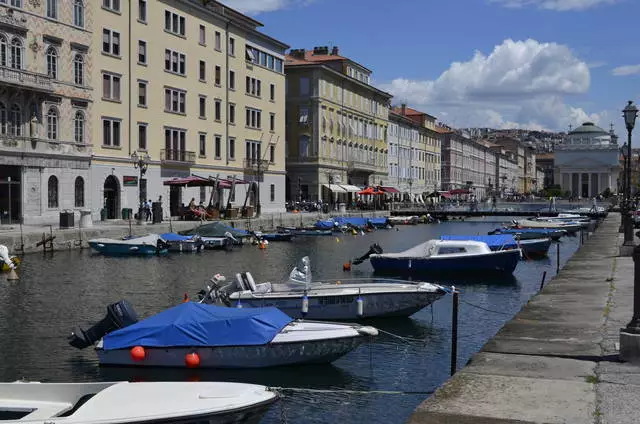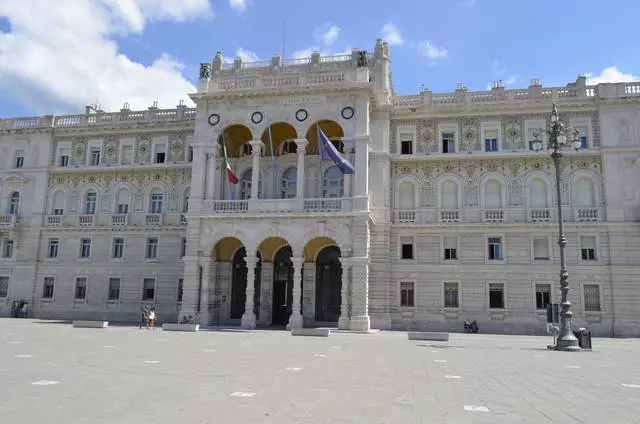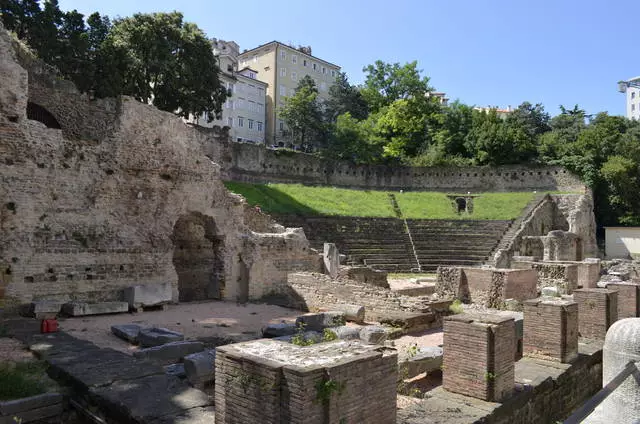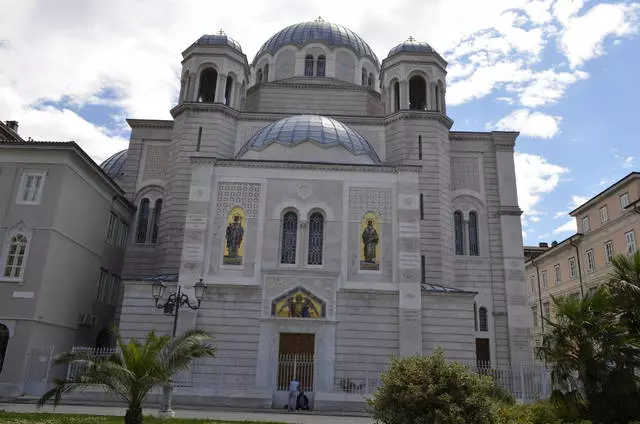Trieste, the city, which has absorbed the tradition of three cultures. Here, colorful Italian speech is adjacent to a laconic German, and Italian inscriptions on buildings are duplicated by Slovenian. The city in which the influence of Austria-Hungary was intershoted, Trieste, neighboring Slovenia, was in whose power (the nearest large Slovenian port of Koper is just half an hour) and, of course, his native Italy. The city, not deservedly forgotten by tourists, as if hidden in the shadow of his brilliant neighbor-Venice. There is no pomp and bright tinsel, but, nevertheless, in Trieste there is something to see and linger at least for a day.
Grande Channel or Big Channel
The man-made large Trieste Channel, created under the leadership of Mary Teresia Austrian, the daughter of the Austrian emperor, leads from the sea to the very center of the city - to the Square of Italy's unity. Numerous boats moored along the canal, and both shores are decorated with palaces built in the style of late classicism. Previously, the channel was longer, but in the 30s of the 20th century, with the demolition of the part of the buildings of the old part of the Trieste, the fragments and garbage were discharged here, falling asleep part of the channel along with tens of boats moored here.

Square of Unity Italy
The Square of Italy's unity is a fairly large rectangle, along the perimeter decorated with lush buildings in Byzantine, classic style, as well as in the style of Baroque. Here you can admire the seven Parables of Trieste - Pittery, Modello, Strathi and others. The municipal palace is the most solemn species. The palace looking at the sea is decorated with a clock tower with bronze maras, which locals are called jacuas and micke. The Palace is decorated with stucco. Also on the Square of Unity are the column with the statue of Charles VI and the fountain of four continents, built in the Baroque style.

Cathedral and Castle San Jouth
On San Jucosto Hill, near the Square of Italy and the Grande Channel, there are Cathedral of San Jouth and the castle with the same name. The castle is interesting to the mixing of architectural styles, as they built it two centuries. Different architects. The entrance to the castle is paid - 4 euros. Interestingly, at one time the castle was the residence of the head of the Trieste, then the Museum is now in a prison, now there is a museum. In the Cathedral of the Cathedral, the most interesting place is the quarlet-carlist chapel, open from 8 am to 5 pm. A few more churches are adjacent to the temple: St. Michael, St. John the Baptist and Saint Sylvester.
Historic Museum Lapidario Teregistino
The Museum, which is an ancient name of Trieste Triesteen, introduces the history of the city, its architecture and sculpture, which has survived since the Roman Empire. There is a museum in the very center of the city, at the Cathedral Square, opened the first half of the day from Monday to Saturday. Entrance to the historic museum is free.
Roman Theater.
The Roman Theater of Trieste, located on Via del Teatro Romano almost in the heart of the city, attracts not only tourists, but also lovers of music and ideas - in the summer there are various concerts here. Theater, despite his age, exceeding two thousand years, is very well preserved. At one time he was almost on the shores of the Adriatic Sea, however, later, because of the hazing, drove in the city.

Lighthouse Victory
Like any maritime city, in Trieste there are several lighthouses, the most significant of which is the Victory Lighthouse. A lighthouse was built in the twenties of the 20th century and is dedicated to the sailors who defended Trieste during the First World War. The old Austro-Hungarian fortress was the foundation of the lighthouse, the bronze dome and the statue of the Roman goddess of Victory, the sculpture of the sailor, as well as the anchor of the ship, the first to enter the port of Trieste on the end of World War II. Based on the lighthouse, the inscription is engraved: "Sveti and remember the fallen into the sea", dedicated to the dead sailors.
Church of St. Spiridon
The Orthodox white-gray temple, located near the Grande Channel, reminds of the immediate proximity of Trieste to Orthodox-Slavs. The temple itself is built in the Byzantine style, decorated with five blue dips and tower-bell tower. The facade of the church, despite the conciseness of the construction itself, attracts the look - the walls are lush decorated with a magnificent mosaic. The interiors of the Church and the three of her altar are also decorated with Byzantine mosaic.

Museum of Realtrella
The Museum of Revaltle is a gallery of modern Italian art, where paintings and sculptures of Italian authors of the XIX century are collected. Here you can admire the works of Domenico Morelli, Jacomo Favretto and others. Separate attention deserves magnificent views from the terrace of the museum located on the sixth floor of the building.
Castle Miramare.
Miramare - Castle on the Cape of the same name, in eight kilometers from Trieste, on the very seashore, is considered the most significant attraction of the city and the entire coast. Some compare it with a "swallow jack" in the Crimea. The castle was built by order of Ersgertzoga Maximilian. Gothic and Renaissance were twisted here. It is impressive and the surrounding castle garden, spread on more than twenty hectares and accessible to visit. Here you can admire exotic plants brought by ERCGERCOG from their travels. You can get to the castle by train from Trieste, to the station with the name Miramare.
Rusierra di San Sabba
The sadly famous building, originally the ex-workshop for rice processing, and during the years of fascism in Italy, the death camp. Nowadays, there is a city museum, the entrance to visitors is free. There is a museum at Ratto della Pellery, house 43, and you can get here on the city bus number eight, coming from the Trieste railway station.
GROTTA GIGANTE CAVE
Ghaiant Giant or Giant Cave is the largest cave in Italy. Here you can admire the magnificent, up to 12 meters the stalagmites highlighted by spotlights. The temperature here is always 12 degrees of heat, so wishing to visit this amazing cave, it is worthwhile to stock warm things. You can get here on the bus route 42, there is a cave on Borgo Grota Giant, 42a. The cost of the entrance ticket for adults is 7.5 euros, for children - 5.5 euros.
